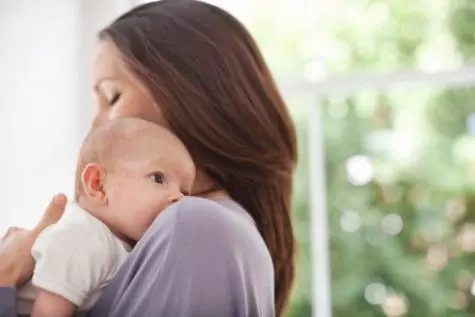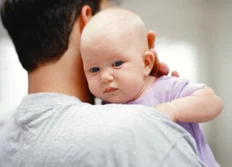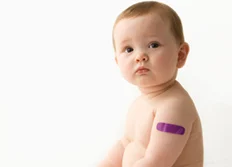Measles is much rarer than it used to be, but it’s really unpleasant for your little one if they get it. So it’s good to know how to treat it.
From simple tips to help them feel less poorly to bringing down their fever with paracetamol, there’s lots you can do to nurse them back to their usual selves.
How do I know if my little one has measles?
Measles is a lot less common in than it used to be, thanks to the measles, mumps and rubella (MMR) vaccine but it’s worth knowing how to spot it, just in case.
When it starts off, you might see
your little one has a high temperature
some cold like symptoms
their eyes are red and sensitive to light
greyish white spots in their mouth and throat.
After a few days, look for
a blotchy rash of brownish-red spots coming up behind their ears
the rash spreading over their whole body
potentially some aches and pains.
It's important to contact your GP right away if you suspect that your child has measles, so they can confirm (or rule out) that’s the case.
How can I help them feel better?
As a parent, it’s only natural to be worried if your child has measles. Although there’s no specific treatment, it usually clears up after seven to ten days and there are lots of things you can do to help your little one feel better.
The most important thing is to make sure they get plenty of good rest.
Do they have a fever?
Measles also can cause children to feel feverish, so you may want to keep an eye on their temperature. To help you keep note of how they’re doing, we’ve prepared a fever diary.
Download our fever diary to keep track of their temperature (PDF)
Are they suffering from aches and pains, too?
Aches and pains can make it hard for your little one to settle and get the rest they need. Here are some options that can help.
Try a paracetamol-based medicine that gives them pain relief, like CALPOL® Infant Suspension. It’s suitable for babies over 2 months, weighing over 4kg and not premature.
Are they 6 years or older? You could try a paracetamol-based medicine for older children, like CALPOL® SIXPLUS™ Suspension.
Handy tip
Measles can make your little one feel very sensitive to the light, so try closing their curtains or turning lights down low.
Some more simple tips
You might find your child has crustiness around their eyes. Use damp cotton wool to wipe it away, wiping from the inner to the outer eyelid. Use a new piece of cotton wool with each wipe.
Offer them lots of drinks to keep them hydrated.
How long will it last?
Your child should start to feel a lot less poorly and more like their usual selves after a week or so as the infection is normally fought off within 7-10 days.
How long will my little one remain infectious?
Anyone who hasn’t been vaccinated or had it before can get measles but it's most common in children between one and four years old.
Measles can be spread quite easily and your little will be infectious from when symptoms first start to develop until about four days after the rash appears.
To limit the spread of infection make sure coughs and sneezes are caught in tissues if possible and wash their hands often.
It's also best to keep them out of school or nursery for at least four days from the appearance of the rash.
When to call the doctor
Measles is highly infectious, so it’s easy for the infection to spread to other people quickly if they haven’t been vaccinated. For this reason, if you think your child has measles, you should contact your GP as soon as possible.
See also
Mumps
If your child is complaining of painful, swollen glands around their jaw, fever and difficulty swallowing, then they could have mumps.
Contact the HSE
For health advice and reassurance.
1850 24 1850






